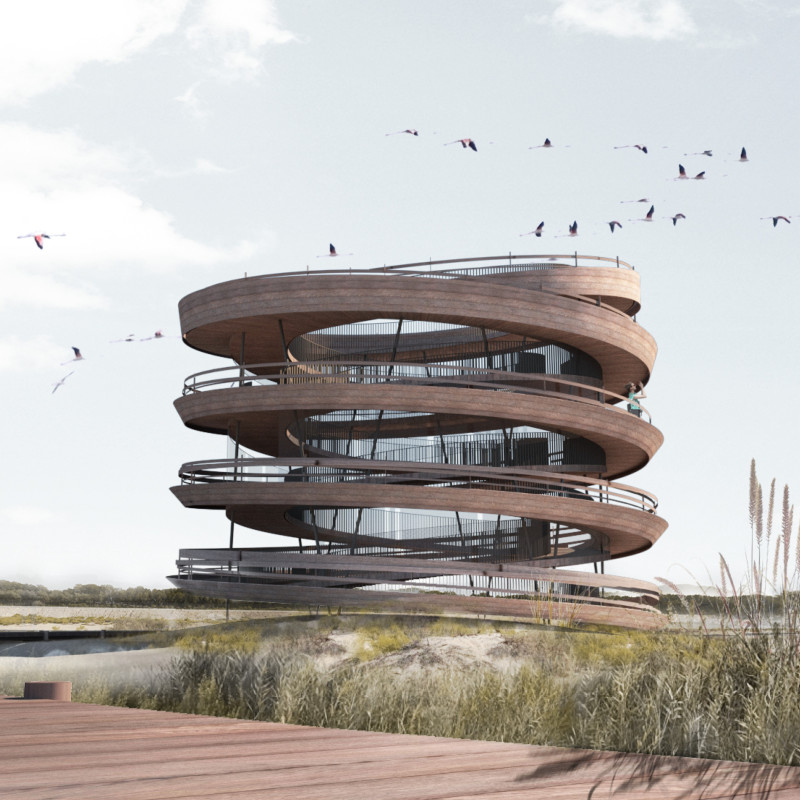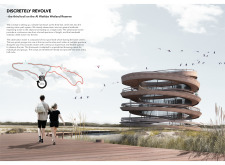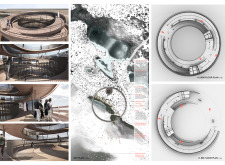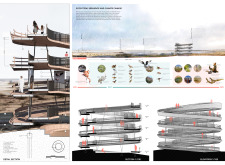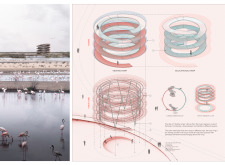5 key facts about this project
The third trail at Al Wathba Wetland Reserve is designed to enhance visitor experiences within its unique ecological setting. The project promotes engagement with diverse habitats through thoughtful architecture that focuses on observation and interaction. An observation tower is at the heart of the design, providing expansive views that allow visitors to connect with the surrounding environment in a meaningful way.
Observation Tower
- The observation tower features two spiral trails that interweave and meet at the top, offering varied perspectives of the wetland. This design supports both detailed examinations and wider views, catering to different visitor needs. Ramps ensure wheelchair access, with rest areas positioned at intervals to improve comfort as individuals ascend.
Interaction with Water Levels
- The design takes into account the relationship between water levels and the landscape. During high water periods, interconnected lakes can form, while low water levels in the summer can threaten the ecosystem. The project engages with these changing conditions, making visitors aware of the dynamic nature of the wetland throughout different seasons.
Boardwalk and Ecosystems
- A boardwalk extends from the observation tower, connecting visitors to various ecosystems and serving as a pathway for exploration. This pathway allows for close encounters with various environments, transitioning from desert to wetland. It enhances the educational experience, putting visitors in direct contact with the flora and fauna present in the reserve.
Natural Buffers and Habitat Zones
- Tall reeds act as natural buffers that protect key habitats from human activities. These areas, where land meets water, provide essential living spaces for resident and migratory bird species, offering crucial food resources. The circular boardwalk also includes native plant species, which further educate visitors about the local ecology.
The combination of these design elements creates a visitor experience that supports interaction with the natural landscape while emphasizing the importance of ecological awareness within the Al Wathba Wetland Reserve.


